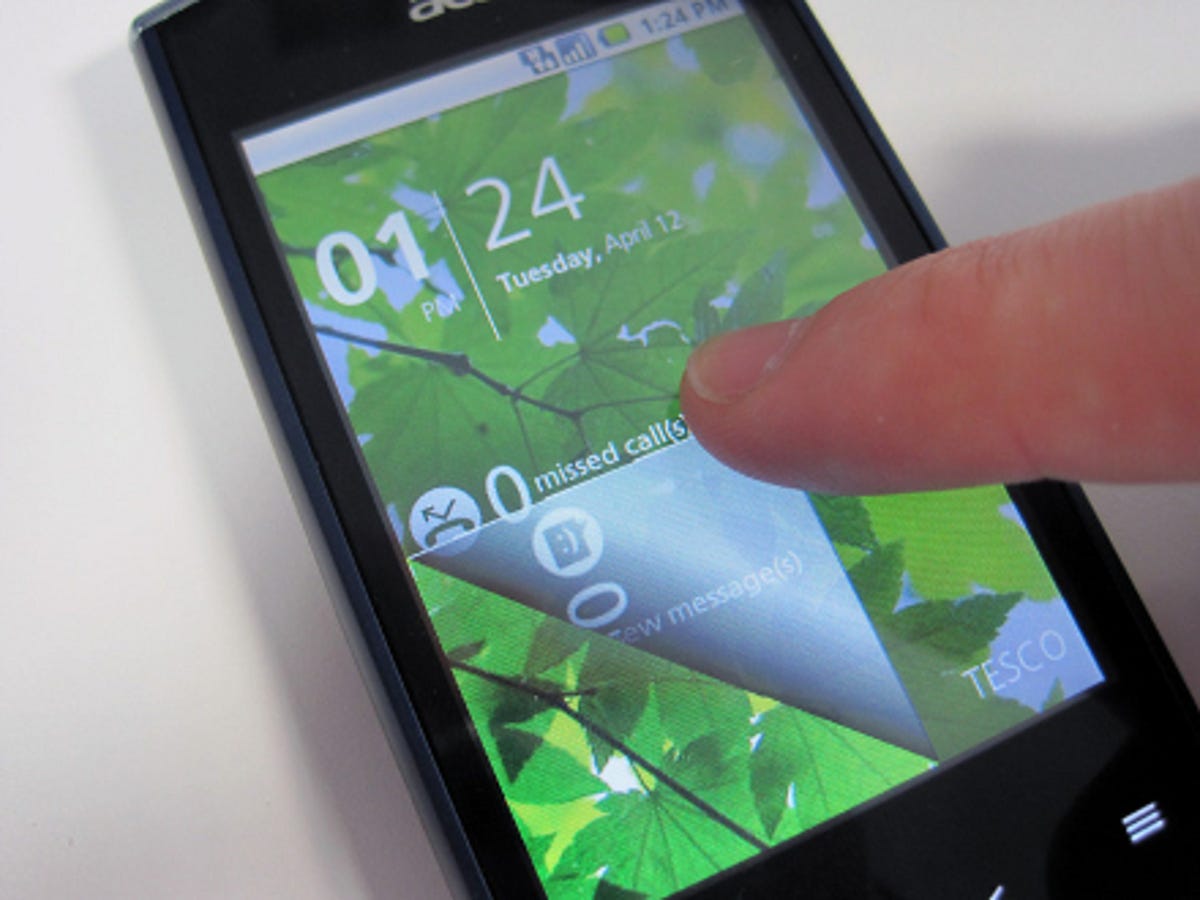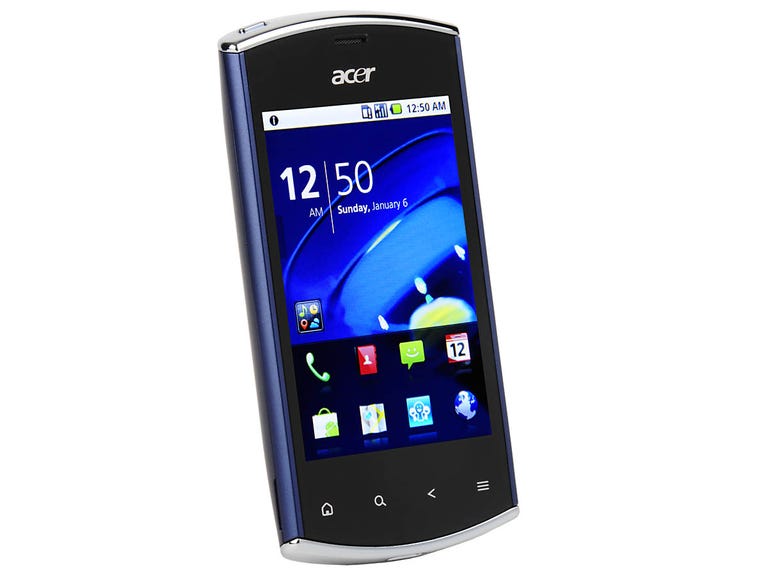 Why You Can Trust CNET
Why You Can Trust CNET Acer Liquid Mini review: Acer Liquid Mini
The Acer Liquid Mini isn't a disaster by any stretch of the imagination, but its lacklustre specs prevent it from standing out from the rest of the budget Android smart-phone crowd.
The Acer Liquid Mini joins the likes of the HTC Wildfire and LG Optimus One at the reasonably priced end of the Android smart phone spectrum. Unfortunately, its compromised hardware is certain to prevent it from finding a massive audience.
The Good
The Bad
The Bottom Line
The Liquid Mini is available SIM-free for around £200. Contract prices are around the £25-per-month mark, but you can expect that figure to drop sharply over the coming months.
Like father, like son
The Mini bears more than a passing resemblance to its older sibling, the Acer Liquid. The curved top and bottom give the handset a distinctive appearance, and allow it to sit comfortably in the hand. The Mini is available in a range of colours, including blue, pink, green, black and silver.

The phone's case feels plasticky but its construction can't be described as shoddy. Everything feels robust and sturdy, and the battery cover locks tightly to the rest of the phone, reducing creakiness. In fact, it's too secure -- you'll need long nails and strong fingers to remove it.
Screen sorrow
The Mini's screen has 'budget' written all over it. At 3.2 inches, it feels tiny compared to the likes of the HTC Desire HD's display, and its disappointing resolution of 320x480 pixels means that images look blocky. Typing using such a small display is also problematic.
We have to take issue with the overall brightness and clarity of the TFT display too. Even at full brightness, it looks dim, although the colour balance is acceptable. On the bright side, the Mini uses capacitive touchscreen technology, which is highly responsive and doesn't require you to exert any finger pressure.
We've seen a growing trend for phones to ditch dedicated camera buttons, so it's pleasing to see that the Mini goes against the grain in this respect. Holding down the camera button fires up the photo- and video-capture application, and a second press takes a snap or initiates recording.
Snap a shot
The 5-megapixel camera is okay for capturing occasional snapshots, but its video capability is distinctly underwhelming. A 720x480-pixel resolution is all it can muster. While these miniature movies looks fine on the phone's screen, they become blurry and ill-defined when you view them on a PC or television.
The Mini comes pre-loaded with Android 2.2 Froyo, which means you have access to an entire world of downloadable goodies in the Android Market. Android 2.3 Gingerbread is the latest version of Google's mobile operating system, but you'd have to be an expert to spot the differences. The vast majority of Android applications will run happily in Froyo.
Breezy interface
Acer has placed its own skin, Breeze, on top of the Android operating system. If you're already an Android aficionado, you'll probably struggle to get to grips with this interface.
For example, instead of the standard scrolling home screens, you have a single main screen, which has a small section at the bottom devoted to application shortcuts. To access your five home screens, which can be customised with widgets and the like, you need to tap a dedicated icon. This means you've got one additional step to go through each and every time you want to access your home screens. That will annoy experienced Android users.
We like other elements of the Breeze interface, though. The most interesting is the 'history' widget, which allows you to jump to applications, menus, Web pages and other things you've previously used or visited. The expanded notifications bar is another neat addition, offering more options than the default Android version, and putting them all within easy reach.
Needs more power, captain
Unfortunately, the Mini's feeble 600MHz processor often struggles to keep up with the on-screen action, and rampant multi-tasking can slow the phone to a crawl. A paltry 512MB of RAM also limits the speed and smoothness of the phone's operation.
When it comes to battery life, the Mini is equally lacking. The 1,300mAh power cell packs less of a punch than the new standard 1,500mAh variant seen in most other Android handsets. If you want to make full use of the phone's capabilities, expect to charge it at least once every 24 hours.
Conclusion
We like the Acer Liquid Mini's design and Android 2.2 software, but the display is nothing special and the processor simply isn't up to the task of running modern Android apps and games. We think HTC's Wildfire S would be a much better choice, as would the cheap-as-chips Orange San Francisco. If you're a fan of Acer's previous Android handsets, the Liquid Mini could appeal, but it's certainly not the best smart phone around.
Edited by Charles Kloet


